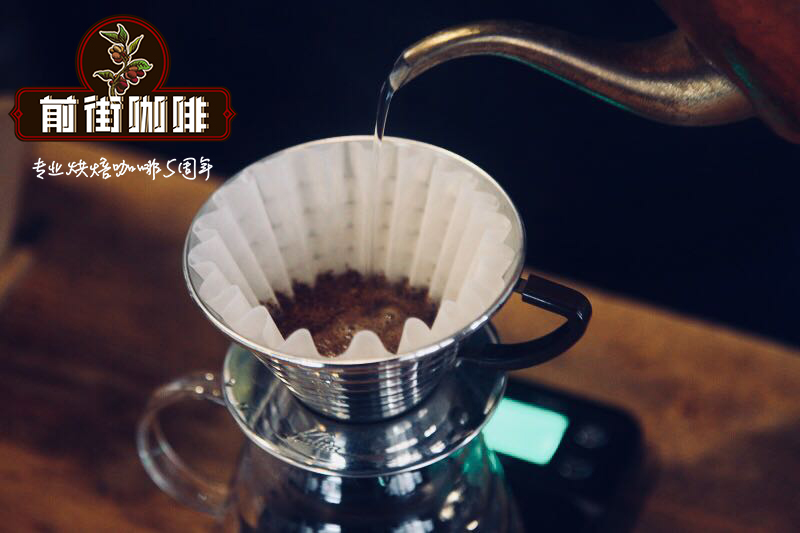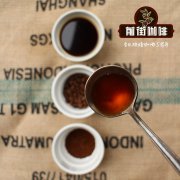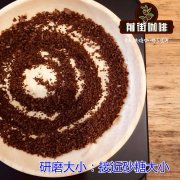The reason of hand-brewing coffee sieve powder in hand-brewing coffee course

Professional coffee knowledge exchange more coffee bean information please follow the coffee workshop (Wechat official account cafe_style)
What is fine powder? Simply put, coffee particles that are significantly smaller than the expected thickness of your grinding
Some people will find it strange that in our last article,
Why did you first mention the means of sifting fine powder by the world champion?
It is also mentioned that not sieving fine powder will actually make the flavor of coffee more complete.
Isn't that contradictory?
In fact, we haven't mentioned the most important cause of coffee brewing.
It is also the variable ─ technique that is most worth discussing and pondering about hand-brewed coffee.
The first reason for sieving fine powder: high strength and high extraction rate
-
Here, we can directly take the champion Matt Perger as an example.
Why does Matt Perger's hand flushing technique have to sift out the fine powder as much as possible?
Because, his technique is a very high-intensity extraction method, the so-called "fine powder mixing method."
In a high intensity extraction environment
High water temperature, long time, strong disturbance, fine particles, high powder / water ratio. And so on.
In fact, it will make coffee powder release more flavor substances, that is, "high extraction rate".
On the other hand, the hand flushing technique of Matt Perger is to extract the coarse particles of the Italian grinder.
However, in terms of the grinding thickness of the general bean grinder, it is still about between 1 and 2, which can be regarded as very fine grinding.
And Matt Perger didn't mention the water temperature. Matt Perger used a temperature of 95 degrees.
Then the strong disturbance of stirring is used to enhance the extraction rate.
This kind of extraction method forces the extraction rate of coffee to 23%. No wonder it is necessary to sift out the fine powder.
If the fine powder is not screened, it is likely that the extraction rate of the fine powder itself will approach the extraction limit.
Fill a cup of coffee with bad flavors such as miscellaneous taste, astringent taste and so on.
So, when you want to extract the flavor of a cup of coffee to the extreme
Whether you want to use high water temperature, long time, strong disturbance, fine particles … And so on.
Sift out the fine powder, it is definitely a method that you can refer to.
The second reason for sieving fine powder: to avoid stale and spoiled.
-
I wonder if you have ever wondered why the coffee has changed.
Remove the limitation of different flavor sensitivity of taste buds in different temperature ranges.
In fact, there will be a problem of coffee going bad after brewing.
Among them, the influence of 'fat' is the most.
In fact, fine powder is the main reason for the fastest and most oil release.
The oxidation and deterioration of oil and fat is actually why coffee becomes turbid after it has been kept for a while.
And there is a strange smell of fermentation, wood smell of the main cause.
Sieving fine powder can effectively reduce the release of oil and fat.
Naturally, it can effectively reduce the stale and prolong the shelf life of coffee.
When you may be busy, you may need to drink coffee in the morning until the afternoon.
Sifting out the fine powder will be a better way for health.
Important Notice :
前街咖啡 FrontStreet Coffee has moved to new addredd:
FrontStreet Coffee Address: 315,Donghua East Road,GuangZhou
Tel:020 38364473
- Prev

The influence and function of Fine Powder in the course of hand-brewing Coffee
Professional coffee knowledge exchange more coffee bean information please pay attention to the excessive extraction of coffee powder brought by the coffee workshop (Wechat official account cafe_style). -- when making coffee When it comes to fine powder, people always avoid it for fear that it is too late.
- Next

Hand-made coffee course hand-made coffee grinding thick and thin ghost teeth? Flat knife? What exactly does the bean grinder want to choose?
Professional coffee knowledge exchange more coffee bean information please pay attention to the coffee workshop (Wechat official account cafe_style) the lower the proportion of fine powder, the better? Or the more uniform the better? -mention the advantages of the bean grinder
Related
- Beginners will see the "Coffee pull flower" guide!
- What is the difference between ice blog purified milk and ordinary milk coffee?
- Why is the Philippines the largest producer of crops in Liberia?
- For coffee extraction, should the fine powder be retained?
- How does extracted espresso fill pressed powder? How much strength does it take to press the powder?
- How to make jasmine cold extract coffee? Is the jasmine + latte good?
- Will this little toy really make the coffee taste better? How does Lily Drip affect coffee extraction?
- Will the action of slapping the filter cup also affect coffee extraction?
- What's the difference between powder-to-water ratio and powder-to-liquid ratio?
- What is the Ethiopian local species? What does it have to do with Heirloom native species?

